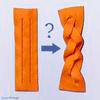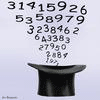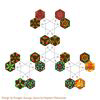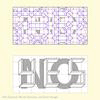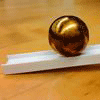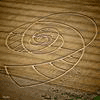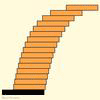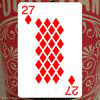Mathematics Awareness Month 2014: Mathematics, Magic, and Mystery
Navigate the Calendar
MoMath - A Place for Mathematics
We end our month long journey by exploring mathematically interesting modes of transportation at MoMath, the National Museum of Mathematics, where even a square can be smooth.
Glen Whitney, Co-Executive Director of MoMath, explains why the square wheel trike rides smoothly on this bumpy track.
Ok, you can ride a bike with square wheels on a catenary curve. But what if the surface is flat? Are there any shapes other than circles and spheres that give smooth rides? Cindy Lawrence, Co-Executive Director of MoMath, shows us an exhibit at MoMath where we can explore this question.
In this Numberphile video Steve Mould discusses two-dimensional and three-dimensional shapes of constant width.
Taking it Further
Here are some questions to ponder:
- Use a straightedge and compass to draw a perfect equilateral triangle and then a perfect Reuleaux triangle. Cut it out of cardboard and verify that it rolls with constant width.
- Can you use a straightedge and compass to do the same thing with a square? What about a pentagon? How about a hexagon?
- A square wheel will roll nicely on the right catenary curve. Regular triangular wheels, however, have a problem riding on catenary curves; can you see why?
The Underlying Mathematics
A Meissner tetrahedron is a modified Reuleaux tetrahedron that is a surface of constant width. Bonnesesn and Fenchel conjectured in 1934 that the Meissner tetrahedron was the minimum-volume three-dimensional shape of constant width. This conjecture remains an open problem. You can read about the history and development of this problem in “Meissner’s Mysterious Bodies,” by Bernd Kawohl and Christof Weber (Mathematical Intelligencer 33 (3), pp. 94–101.)
In “Roads and Wheels” (Mathematics Magazine 65, 1992, pp. 283–301) Leon Hall and Stan Wagon explore wheels of various shapes and the curves on which they can smoothly roll.
You can interactively explore “Bicycle Wheels using Curves of Constant Width” with this Wolfram Demonstration Project by Robert Young. The free Wolram CDF Player is required.
How Round is Your Circle by John Bryant and Chris Sangwin (Princeton University Press, 2008) guides the reader through paper-and-pencil constructions and physical models of many compelling shapes.
“Smooth Curves of Constant Width” by Robert L. Tennison (Mathematical Gazette, Vol. 60, No. 414, Dec., 1976, pp. 270–272) tackles the mathematics of two-dimensional shapes of constant width, while “Solids of Constant Breadth” by Cecil G. Gray (Mathematical Gazette, Vol. 56, No. 398, Dec., 1972, pp. 289–292) explores the three-dimensional case.




